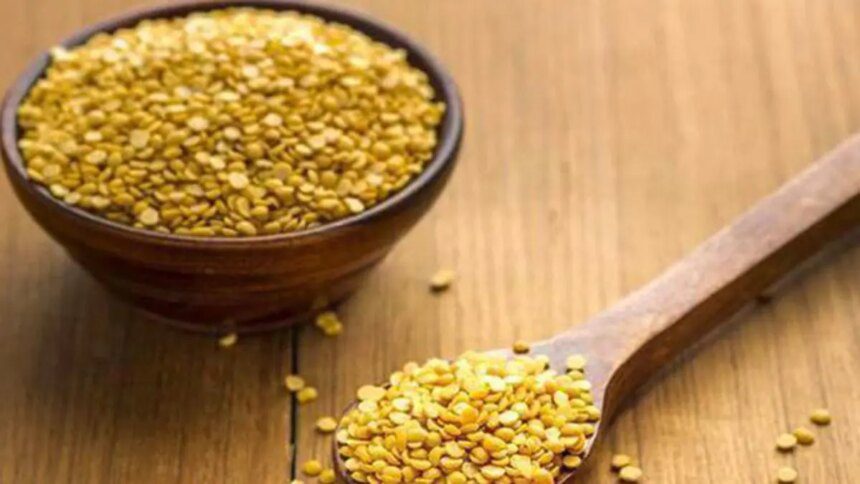toor dal or arhar dal or raw pulses in wooden spoon and bowl | Photo Credit: Prabhjit Singh Kalsi
This will likely result in the pulse market facing disruptions in the coming months. However, imports from African countries such as Tanzania, Mozambique and Malawi, ruling around $550 (₹48,500) a tonne, could make up for any supply shortage in India. The import price is against the minimum support price (MSP) of ₹80,000 a tonne for the current season to June 2026.
In 2024-25, India produced 35.61 lakh tonnes of tur, with Maharashtra accounting for 13.25 lakh tonnes, the highest among all States. Data from the Department of Agriculture and Farmers Welfare show that the area under tur cultivation in India increased marginally from 46.45 lakh hectares in 2024-25 to 46.60 lakh hectares this year (2025-26). Maharashtra’s sowing area stood at 11.89 lakh hectares last year and crossed 11.60 lakh hectares this season.
More than 90 per cent of India’s tur production comes from eight States — Maharashtra, Karnataka, Madhya Pradesh, Uttar Pradesh, Gujarat, Jharkhand, Telangana, and Andhra Pradesh.
Most fields wilting
Typically sown in June and July, tur is harvested after 120–190 days. However, major tur-producing districts — including Ahilyanagar, Sangli, Satara, Pune, Beed, Solapur, Latur and parts of Marathwada — have witnessed heavy and prolonged rainfall, damaging crops at both the flowering and pod formation stages.
“There could be around 40 per cent damage to the tur crop, as large areas are still waterlogged,” said Shivsamb Ladke, Latur district agriculture officer. “Even after the rains subside, the impact will be severe, with wilting visible across most fields.” Latur is one of the India’s biggest grain markets with dal mills dotting the region.
Echoing similar concerns, Sudhakar Borale, the district agriculture officer of Ahmednagar, said reports of widespread damage are coming in from all parts of the district.
Fusarium wilt — a soil-borne fungal infection that blocks the plant’s water and nutrient transport system — has been identified as the primary cause of the damage.
Agriculture expert Deepak Chavan said field assessments indicate that wilt disease has affected about 25-30 per cent of the standing tur crop. “This loss is over and above the destruction already caused by the heavy flooding in recent months,” Chavan noted. However, he added that consumers are unlikely to feel the impact in the market due to ongoing imports of pulses, including tur.
Pest attack
Reports from the field indicate widespread flower shedding and blackened pods due to fungal infection. “This year, prolonged moisture and cloudy weather have hampered crop growth. The yield per hectare could fall by four to five quintals,” said Rajesh Kute, a farmer from Ahmednagar.
Excess moisture and limited sunlight have caused stunted plant growth, delaying pod formation. Although the soil is beginning to dry with the onset of winter, farmers say pest attacks have intensified. In several areas, fields are ready for harvest but the plants have insufficient pods, raising concerns about lower market arrivals in the coming months.
Farmers are now pinning their hopes on clear weather in the next few weeks to salvage whatever remains of their crop.
Published on October 28, 2025










